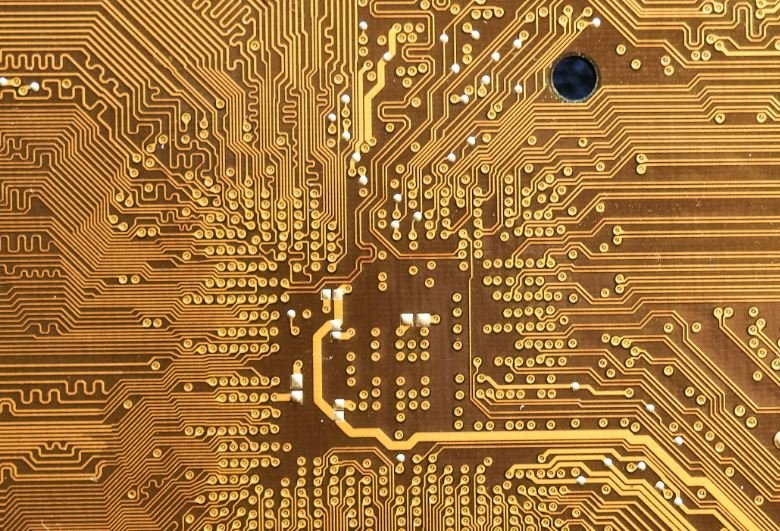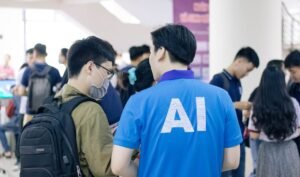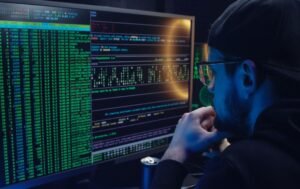Artificial Intelligence: No Copyright
Artificial Intelligence (AI) has become a topic of great interest and importance in recent years. With advancements in technology and computing power, AI has been increasingly utilized in various industries, such as healthcare, finance, and manufacturing. However, one intriguing aspect of AI is the absence of copyright protection for AI-generated content.
Key Takeaways:
- Artificial Intelligence (AI) is extensively used in different sectors due to technological advancements.
- AI-generated content currently lacks copyright protection.
- AI poses challenges in determining ownership and attribution of generated content.
AI-generated content refers to any creation produced by an AI system, such as designs, artwork, music, or even written articles. Unlike human creations, AI-generated content is not eligible for copyright protection because copyright laws typically grant protection to original works created by humans. This poses unique challenges in establishing ownership and attribution for AI-generated content.
What makes AI-generated content intriguing is its ability to create innovative and unique works. *With AI’s ability to analyze vast amounts of data and learn, it has the potential to revolutionize creative industries,* creating content that is beyond what humans can produce alone. However, the lack of copyright protection for AI-generated content raises questions about its ownership and the rights associated with it.
Challenges in Ownership and Attribution
Identifying the creator and establishing ownership of AI-generated content is a complex issue. In most cases, AI models are developed and trained by human programmers or data scientists. However, once the AI system is trained, it can generate content autonomously without direct human intervention. This creates ambiguity in determining who should be credited as the creator of the content. *Determining the origin of AI-generated content can be likened to tracing back an unending chain of influences and algorithms.*
Moreover, the involvement of multiple parties, including developers, programmers, and data providers, further complicates the question of ownership. It raises concerns about equitable distribution of rights and royalties. Additionally, traditional methods of identifying plagiarism or copyright infringement may prove insufficient when dealing with AI-generated content.
Table 1: AI-Generated Content vs. Human-Created Content
| AI-Generated Content | Human-Created Content |
|---|---|
| Autonomously generated by AI systems. | Created by human intellect and creativity. |
| No eligibility for copyright protection. | Eligible for copyright protection. |
| Raises questions about ownership and attribution. | Ownership and attribution are usually clear. |
Attempts to address these challenges have led to debates and proposals for new legal frameworks surrounding AI-generated content. Some argue for granting copyright protection to AI-generated works, treating AI as a legal person capable of owning intellectual property. Others advocate for alternative forms of protection or attribution mechanisms, such as allowing AI to be named as the creator but recognizing the human creators behind its development.
It is important to note that while AI-generated content lacks copyright protection, existing copyright laws still come into play when humans are involved in the creation process. If a human contributes to the AI-generated work in a meaningful way, they may still possess certain rights or be considered a joint author.
Table 2: Proposed Solutions for AI-Generated Content
| Proposal | Description |
|---|---|
| Grant AI copyrights | Acknowledge AI as a legal person with ownership rights. |
| Alternative attribution mechanisms | Allow AI to be named as the creator while recognizing human input. |
| Joint authorship with human contributors | Recognize humans’ involvement as joint authors of AI-generated works. |
The ongoing discussions surrounding AI-generated content and copyright protection reflect the need for evolving laws and regulations to keep pace with technological advancements. As AI continues to advance, striking a balance between incentivizing innovation and ensuring fairness in the creative process remains a significant challenge.
Table 3: Benefits and Challenges of AI-Generated Content
| Benefits | Challenges |
|---|---|
| Unprecedented creativity and innovation. | Ownership and attribution dilemmas. |
| Increased efficiency in content generation. | Difficulties in identifying plagiarism and copyright infringements. |
| Potential for new forms of artistic expression. | Ensuring equitable rights distribution. |
The world of AI-generated content continues to evolve, with policymakers, legal experts, and industry professionals grappling with the complexities surrounding ownership and attribution. As technology progresses, addressing these challenges becomes crucial for establishing a framework that encourages innovation while respecting the rights of human creators.

Common Misconceptions
Misconception 1: Artificial Intelligence will take over the world
One common misconception surrounding artificial intelligence (AI) is the fear that it will eventually take over the world and render humans obsolete. While AI has the potential to greatly impact various aspects of society, it does not possess the ability to spontaneously become self-aware or develop malevolent intentions.
- AI is only as capable as it is programmed to be and lacks consciousness.
- AI technology can be leveraged in a multitude of ways to improve human lives.
- Ethical guidelines can be implemented to ensure AI is used responsibly and for the benefit of society.
Misconception 2: AI is only about human-like robots
Another misconception is that AI solely refers to humanoid robots or machines that mimic human behavior. In reality, AI encompasses a much broader field that involves simulating intelligent behavior in machines, which can be achieved through various algorithms and techniques.
- AI can be found in everyday technology such as voice assistants, search engines, and recommendation systems.
- Machine learning and deep learning are key components of AI that go beyond human-like robots.
- AI can be utilized to automate repetitive tasks, analyze data, and make predictions.
Misconception 3: AI will replace human jobs entirely
There is a common fear that AI will lead to mass unemployment as it replaces human workers in various industries. While AI may automate certain tasks and job functions, it is unlikely to completely replace humans in most occupations.
- AI can complement human work by freeing up time for more complex, creative, or decision-making tasks.
- Some jobs that involve interpersonal skills, empathy, or creative thinking are less likely to be automated by AI.
- New job opportunities and roles will emerge as AI technology evolves.
Misconception 4: AI is infallible and always unbiased
Another common misconception about AI is that it always produces accurate and unbiased results. However, AI systems are only as reliable as the data they are trained on and the algorithms used to process that data.
- Biases can be inadvertently introduced into AI systems through biased training data or algorithm design.
- Ethical considerations and careful monitoring are necessary to ensure AI systems do not perpetuate discrimination or unfairness.
- Ongoing research and iterative improvements are required to mitigate biases and enhance AI performance.
Misconception 5: AI is a recent invention
Some people mistakenly believe that AI is a relatively new concept that has emerged in recent years. However, the idea of AI has been around since the mid-20th century, and researchers have been working on various AI-related technologies and algorithms for decades.
- The field of AI dates back to the 1950s when the concept was first coined.
- AI research has been influential in developing technologies such as natural language processing, computer vision, and expert systems.
- Ongoing advancements and breakthroughs continue to push the frontiers of AI.

Introduction:
Artificial Intelligence (AI) has revolutionized various industries, bringing forth numerous advancements and innovations. However, one intriguing aspect of AI is the absence of copyright. Unlike traditional creative works, AI-generated content often lacks clear ownership or legal protection. Below are ten fascinating examples presenting the implications and impact of this copyright void.
1. AI-Generated Music on Streaming Platforms:
Recent AI advancements have resulted in the creation of stunning musical compositions. These compositions, generated by AI algorithms, have found their way onto popular streaming platforms, captivating listeners worldwide.
2. AI-Authored Books and Novels:
In an unprecedented turn of events, AI algorithms have produced entire books and novels. These AI-authored literary works have intrigued readers, sparking debates on the creative process of machines and the value of human imagination.
3. AI-Driven Art Installations:
AI has been utilized to create intricate and mesmerizing art installations, blurring the lines between human and machine creativity. These AI-driven art pieces have been showcased in renowned galleries, engaging audiences in new and thought-provoking ways.
4. AI-Enhanced Fashion Design:
Fashion designers have started incorporating AI into their creative process, utilizing algorithms to generate unique and innovative fashion designs. These AI-enhanced designs have brought a fresh perspective to the fashion industry, pushing boundaries and challenging traditional norms.
5. AI-Generated News Articles:
AI algorithms are now capable of generating news articles, presenting real-time information to the public. However, the lack of copyright protection raises concerns regarding the authenticity and reliability of AI-generated news pieces.
6. AI-Driven Movie Scriptwriting:
AI algorithms have also ventured into the realm of scriptwriting, generating screenplays for potential movies. This AI-driven approach to scriptwriting has sparked discussions about the role of AI in the creative entertainment industry.
7. AI-Composed Poetry:
AI has delved into the delicate art of poetry, producing verses that evoke emotions and challenge traditional notions of human creativity and imagination. AI-composed poetry has gained recognition and appreciation within poetry circles.
8. AI-Designed Video Games:
Through AI algorithms, video games have achieved new levels of complexity and immersion. AI has been utilized to design game levels, generate dynamic storylines, and even control non-player characters, revolutionizing the gaming experience.
9. AI-Created Advertising Campaigns:
Advertising agencies have embraced AI to create compelling and personalized advertising campaigns. Algorithms can analyze consumer data and generate tailored advertisements, potentially revolutionizing the marketing industry.
10. AI-Enhanced Scientific Research:
AI has significantly accelerated scientific research by aiding in data analysis, simulation, and hypothesis generation. Researchers are relying on AI to tackle complex scientific challenges, leading to breakthroughs in various fields.
Conclusion:
As the realm of AI expands, the issue of copyright becomes increasingly complex. AI-generated content challenges the fundamental notions of creative ownership, pushing us to redefine the concept of authorship in an AI-driven world. While exciting and promising, the absence of copyright in AI raises questions about intellectual property rights and the future of human creativity.
Frequently Asked Questions
Artificial Intelligence
What is artificial intelligence?
Artificial intelligence (AI) refers to the development of computer systems or machines that can perform tasks that typically require human intelligence. These tasks include speech recognition, decision-making, problem-solving, learning, and understanding natural language.
How does artificial intelligence work?
Artificial intelligence works by using algorithms and machine learning techniques to analyze data, recognize patterns, and make informed decisions. It involves training AI systems with large amounts of data so that they can learn and improve their performance over time.
What are the different types of artificial intelligence?
There are three main types of artificial intelligence: Narrow AI (also known as weak AI), General AI (also known as strong AI), and Superintelligent AI. Narrow AI is designed to perform specific tasks, like facial recognition or language translation. General AI possesses human-level intelligence and can perform any intellectual task that a human can do. Superintelligent AI refers to an AI system that surpasses human intelligence in nearly every aspect.
What are the applications of artificial intelligence?
Artificial intelligence has a wide range of applications across various industries, including healthcare (diagnosis and treatment planning), finance (fraud detection and investment analysis), automotive (self-driving cars), customer service (chatbots), and manufacturing (process automation and quality control), among others.
What are the ethical concerns associated with artificial intelligence?
Some of the ethical concerns associated with artificial intelligence include privacy and data security, job displacement, biased decision-making, and the potential for AI systems to be used for malicious purposes. Ensuring transparency, accountability, and fairness in AI systems is crucial to address these concerns.
How does artificial intelligence impact society and the workforce?
Artificial intelligence has both positive and negative impacts on society and the workforce. While it can enhance productivity, efficiency, and innovation, it also has the potential to replace certain job roles, leading to job displacement and socioeconomic inequalities. Preparing the workforce for the AI era and rethinking educational systems and job markets are essential for managing the impact.
What is the future of artificial intelligence?
The future of artificial intelligence holds great potential. Advancements in AI technologies, such as deep learning, reinforcement learning, and natural language processing, are expected to drive significant progress. AI is likely to play a crucial role in areas like healthcare, transportation, education, and sustainability, among others.
What are some notable AI advancements?
Some notable AI advancements include AlphaGo, an AI program that defeated human champions in the board game Go, OpenAI’s GPT-3, a highly advanced language model that can generate human-like text, and self-driving cars developed by companies like Tesla that use AI algorithms to navigate and make driving decisions.
What are the challenges in the development of artificial intelligence?
Developing artificial intelligence faces several challenges, such as the need for massive amounts of high-quality data to train AI models effectively, addressing ethical concerns and biases in AI systems, understanding and interpreting AI decisions, and ensuring cybersecurity to protect AI technologies from malicious attacks and misuse.
How can I get started with artificial intelligence?
If you’re interested in getting started with artificial intelligence, you can begin by learning programming languages such as Python or R, which are commonly used in AI development. Familiarize yourself with machine learning algorithms and concepts through online courses and tutorials. Additionally, exploring open-source AI libraries and frameworks like TensorFlow or PyTorch can provide hands-on experience.




